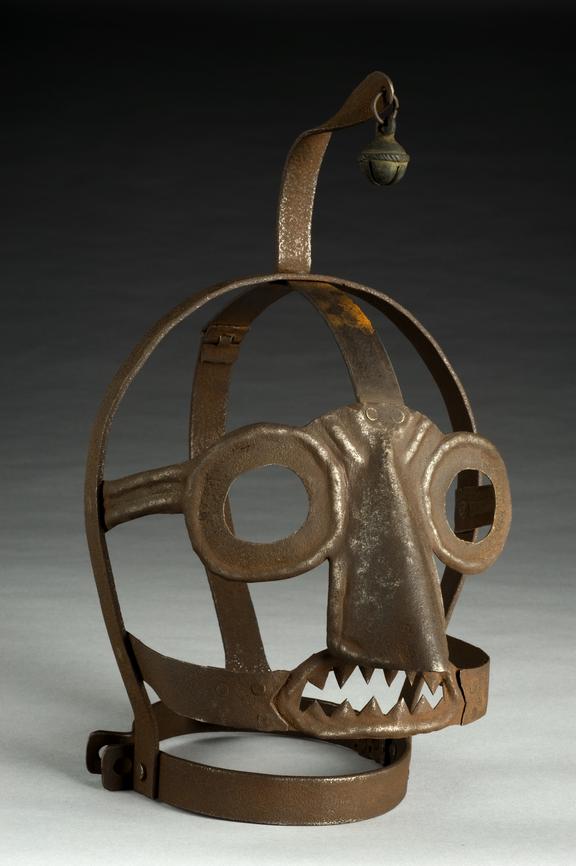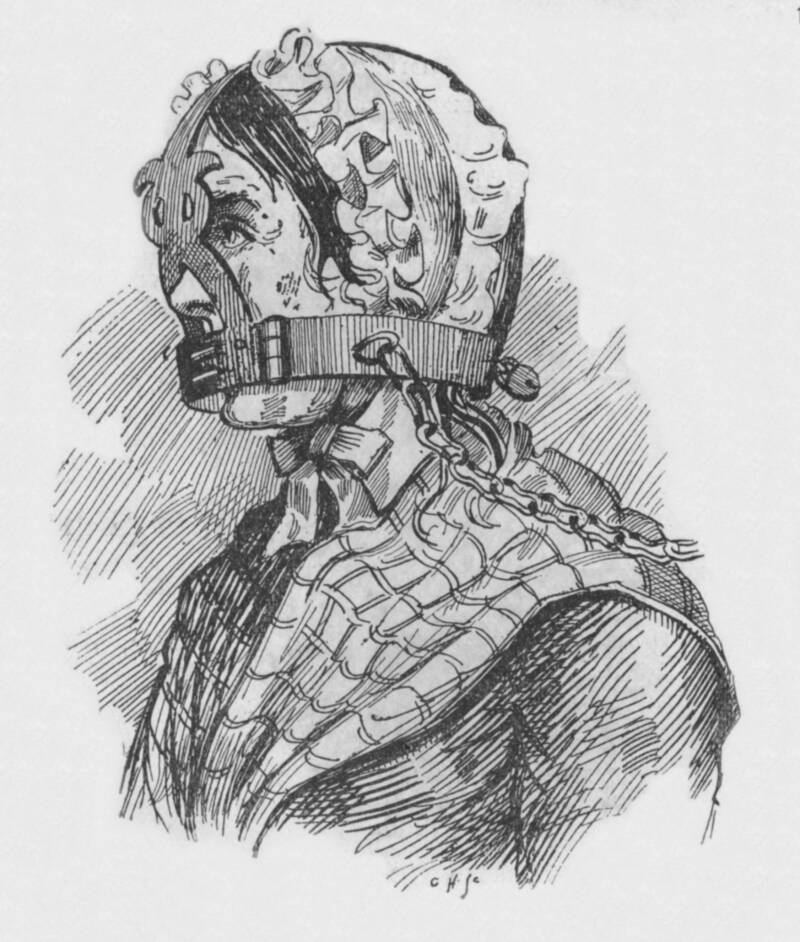The tradition of using scold’s bridle masks—characterized by a large nosepiece, a jagged mouth, a hinged neck ring, and a bell perched atop the head—likely began in Germany between 1550 and 1800. The concept of scold’s bridles, also referred to as ‘branks,’ emerged in Britain during the 1500s and eventually spread to other Northern European nations, including Germany. Historically, these devices have been documented as tools of misogynistic punishment aimed primarily at women accused of ‘gossiping’ or ‘nagging,’ although there is evidence that they were also applied to men.

The term ‘scold’ served as a legal label for individuals considered to have disturbed the peace through their speech—whether by quarreling, drunkenness, or slander. In addition to humiliating the wearer, the bridle was crafted to inhibit speech, reflecting a societal tendency to suppress outspoken women or those who did not adhere to established norms. When employed on men, it was mainly used as punishment for blasphemy or to restrain prisoners.

There were significant differences in the application of these punishments based on gender. Men were commonly subjected to stocks or pillories, while women were often publicly displayed in adorned masks that sometimes featured animal characteristics intended for further humiliation. The particular example in question includes a bell designed to create noise and attract attention to the wearer. Most scold’s bridles came equipped with gags—sometimes featuring spikes—that would be placed in the mouth to restrict the tongue.

Documentation of scold’s bridle usage is limited, likely because it was regarded as an illegal form of torture in England. Nonetheless, reports of its use have been recorded as recently as the mid-1800s. This specific example was acquired at auction for Sir Henry Wellcome’s museum collection in 1935, but details about its history remain sparse.

